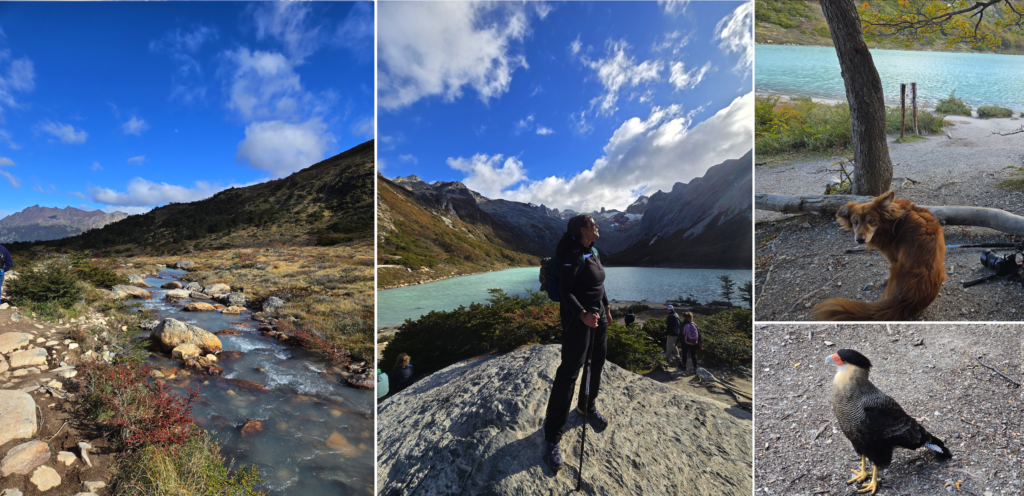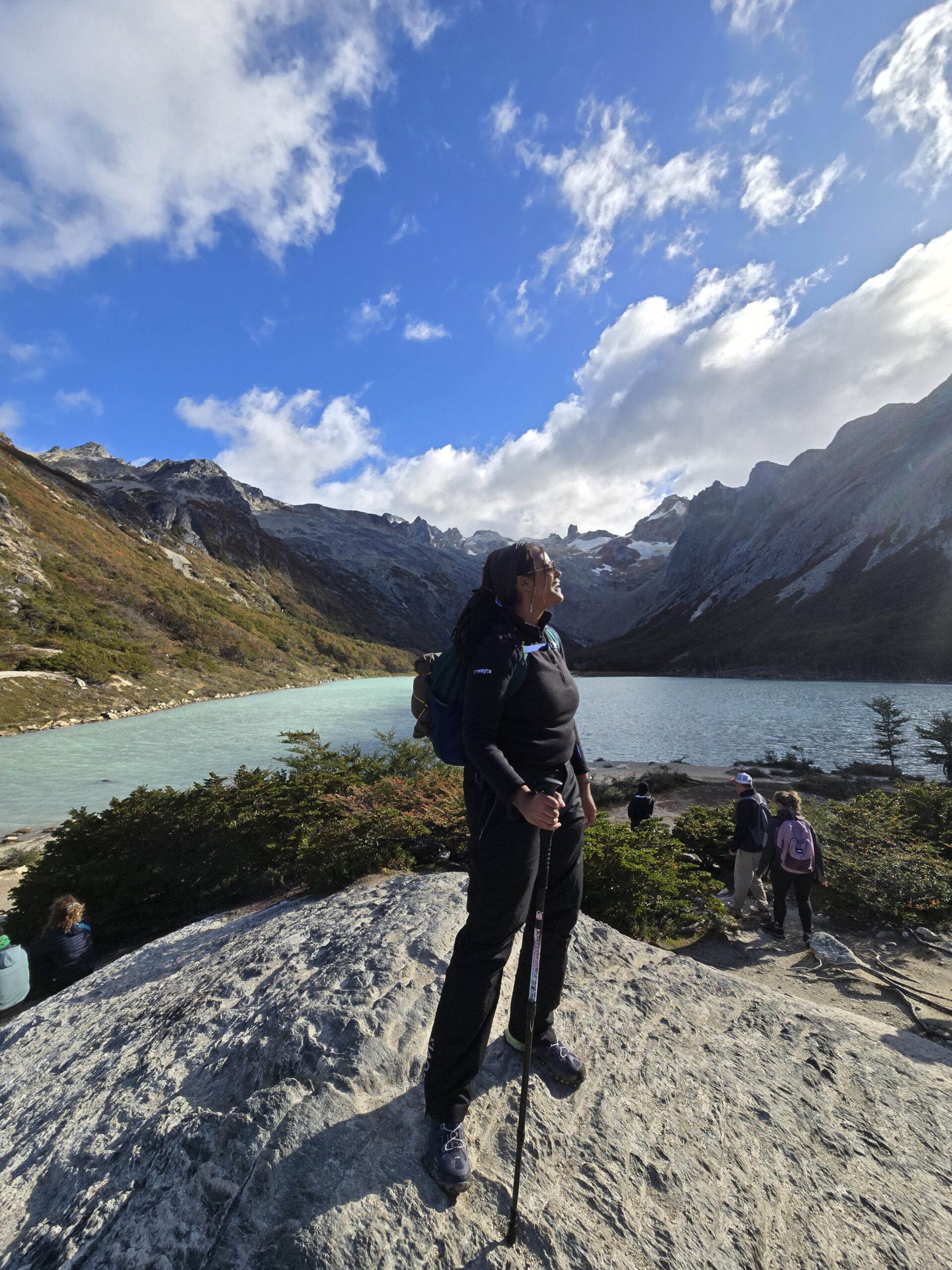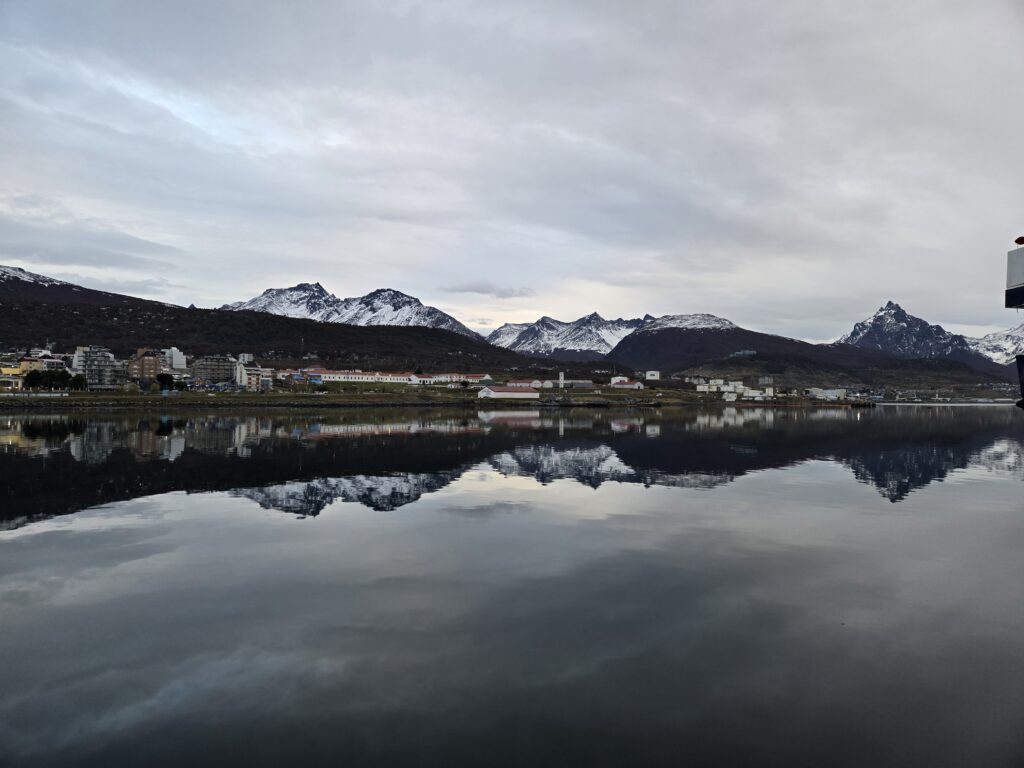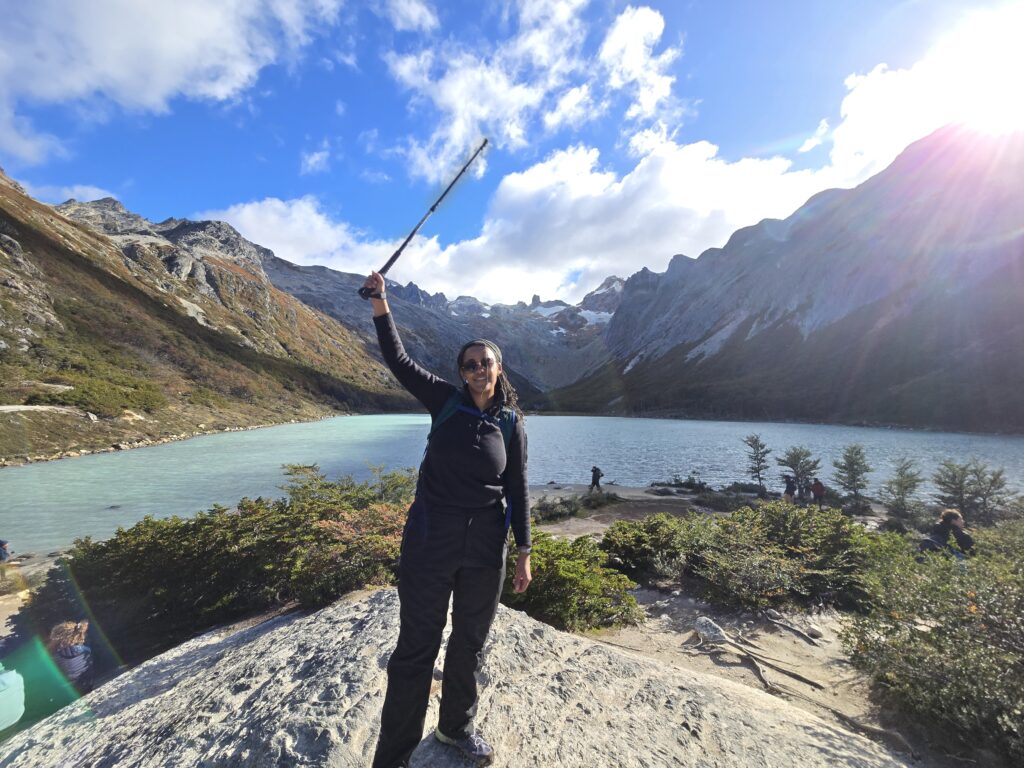En route to Antarctica and in an abundance of caution, I spent three days in Ushuaia, Tierra del Fuego, Argentina. Since these days were meant as the buffer before the boat, my main concerns were not missing the boat or my flight. Any fun was icing on the cake. The Patagonia region is gorgeous with brand-inducing hikes, but I knew my limits (and fears) so I kept my itinerary simple.
.
Neighborhood and lodging
The Main Street of Ushuaia lives up to its name. City-dwellers may find it underwhelming, but it has loads of restaurants, stores with hiking gear, travel agencies, and souvenir shops. I thought equipment might be harder to find at the end of the world, but it seems brands thought ahead in that respect and capitalized on it. That said, I could not find a travel bidet (and it killed me that I forgot it), but most necessities and wants can be found on the Main Street.
Hills abound starting a block away from the sea, so it’s no surprise that my legs got quite a workout just walking around town. Many streets also have stairs to make the incline easier to navigate. Walking around the city was a breeze, and affordable ubers covered trips with luggage. The airport is also only a few kilometers from the city center, less than 20 minutes by car. The town has a resort-feel with higher salaries and less sun compared to the rest Argentina.
My stay at Hosteria Aonikenk offered me one of the best views at a reasonable price, and my first morning I was greeted with a literal rainbow. The breakfast was basic but palatable. I would not expect gastronomic wonders from Ushuaia or Argentina in general, though the churrasca is sublime.

.
The best museum at the end of the world
Before my city tour in the afternoon, I took the opportunity to visit some museums. The best and most recommended museum was Museo del Presidio. There are five wings, all with a theme. At this point, I’m a bit over looking at stuff for the sake of it, so I usually look for particular interests or wait for something to catch my eye. I spent the most time gathering info in the penguin (seabird) and Antarctic wings, but my favorite wing was about the indigenous peoples.
My favorite part of the museum was an exhibition of a radical artist @abtalejandro. Decolonization starts in art and the ideas we find beauty in. For that reason, I also liked the wing dedicated to the indigenous people of Tierra del Fuego. It amazes me that people lived here minimally clothed and adapted to such inhospitable conditions. The indomitable human spirit is a wonder of science and anthropology.

Since the museum is a converted prison, the layout is interesting in its compartmentalization. The cells were repurposed and decorated for more immersive experiences, with informationally dense but well-curated exhibitions. I also appreciated the English translations and the neat web app that they have for information. This museum was significantly more expensive than the Museo del fin del mundo, but had all of the same information and more.
.
A brief city tour
The drive around Ushuaia is amazingly picturesque. Awe-inspring mountains provide a lovely backdrop for the town. The bitingly cold wind ensured my previously damp hair was entirely dry by the end of the tour. We were quite fortunate to see the sun, especially as vitamin D deficiency is a real issue in Ushuaia.
This city tour focused more on Ushuaia’s history and development. Ushuaia sits on an island near the end of an archipelago at the end of the inhabited world. Like Australia, Ushuaia was an attempt at a penal colony and had relics from many European explorers/colonizers. This history is well-represented in the jail turned museum of Museo del Presidio. It’s difficult to imagine people developing this place with anything but enslaved prisoners, because few would choose such an inhospitable place.
Geography plays a huge part in the history and current politics of Tierra del Fuego. Ushuaia boasts some of Argentina’s highest salaries and lowest costs, due to its booming hospitality and inhospitable nature. The mountains make for a beautiful backdrop for all activities, at the price of any warmth. Still our stops were picturesque, and some even sweet! The tour came with the Argentinian delights of alfajores and a dulce de leche liquor that was sweet enough to drown out the flavor of the spirit.
We ended the tour at the base of the Martin Glacier. The main evidence of the glacier was the glacial waters, but I saw no ice up close. Some tours hike to these glaciers, but I fear they would be far above my ability—especially after my “easy” hike.

.
No easy hikes in Patagonia
The same company that did my city tour also had an “easy” hike to La Laguna Esmeralda. In hindsight, the hike being 5 hours should have been the first clue that it wasn’t Griffith Park-level easy, but it was the easiest hike I could find. The tour company required hikers to have waterproof shoes and pants, and they provided a hiking stick and box lunch.
Since I had never been to Patagonia, it’s impossible to know if recent rain made it especially treacherous or if I’m just weak. The guide seemed part mountain goat as she glided over the rocks, branches, and muddy paths. I tended to trail the rest of the group and have a deep-seated fear of falling and of heights, so make of that what you will.
Once we arrived at the emerald lagoon, the view was well worth the effort. The wind tunnels were aggressive, but the sun peaking over the Patagonian mountains made for a majestic view. We had our lunch overlooking the lake and were even joined by some furry and feathered friends!
After we properly fed ourselves and froze, we did the same treacherous hike in reverse. For most hikes, as hard as the way up is, the way down is always worse. That held true here too. I returned exhausted to my hostel at 2pm after 20000 steps and dreading the walk I would inevitably have to do for dinner. Nevertheless, I persisted and survived with no injury before journeying past the end of the world to the White Continent.

.
Cruising around the Beagle Channel
When I found myself with an extra day in Ushuaia after Antarctica, I decided last-minute to take a cruise. If you also love the sea and simply cannot get enough of the water, then a cruise might be a nice idea. As with most things in Ushuaia, it wasn’t exactly cheap, but it was enjoyable.
Cruises along the Beagle focus primarily on seabirds, penguins, and seals. We also took a quick stroll (about 120m) on a small island in the middle of the channel. Unfortunately by the time we had returned from Antarctica, the penguins had returned to the sea. All in all, a great way to kill time before eating my weight in steak at a parilla steakhouse.
.
The end of the end of the world
Ushuaia is more of a rest stop between other activities, but is hardly a destination in and of itself. Whether you’re staying in Patagonia or venturing to Antarctica, it’s a great place to admire natural beauty and stock up on supplies before venturing beyond the end of the world.





